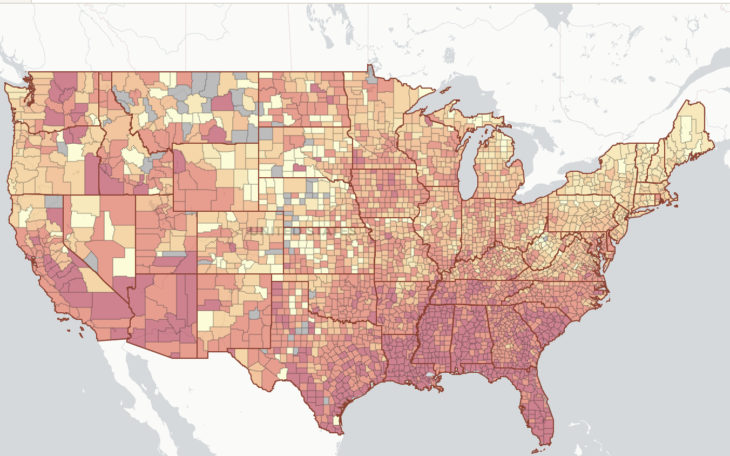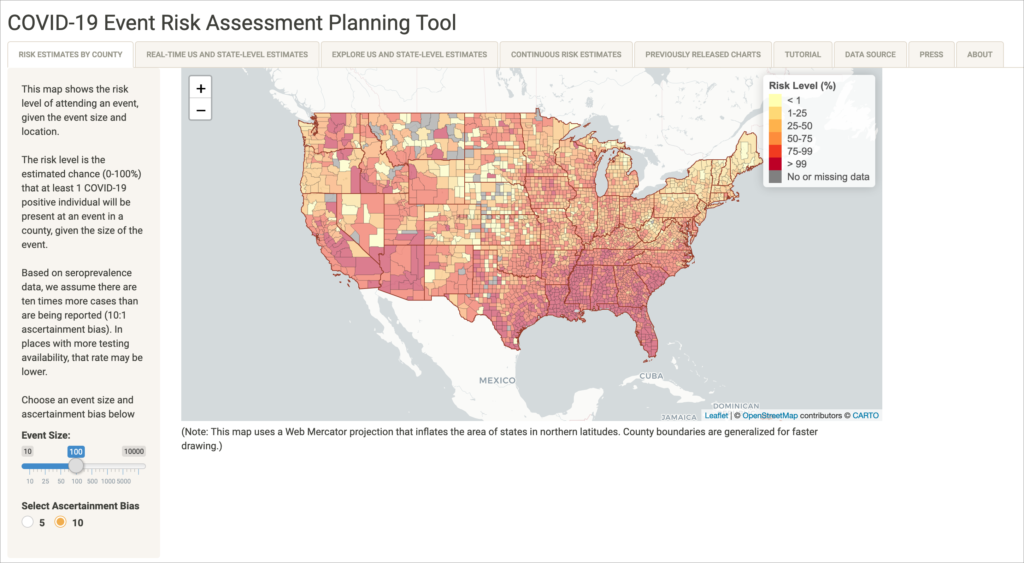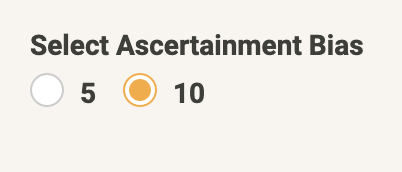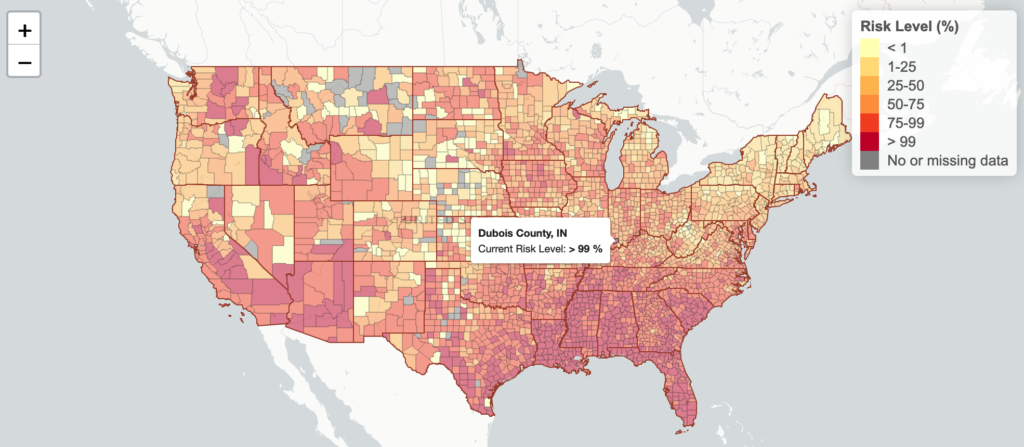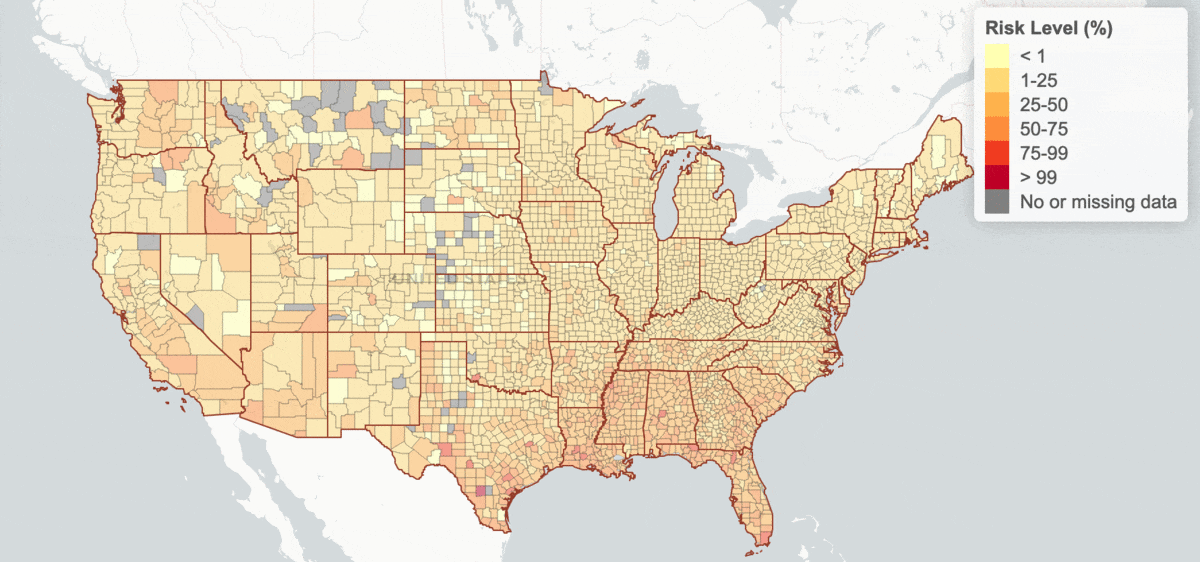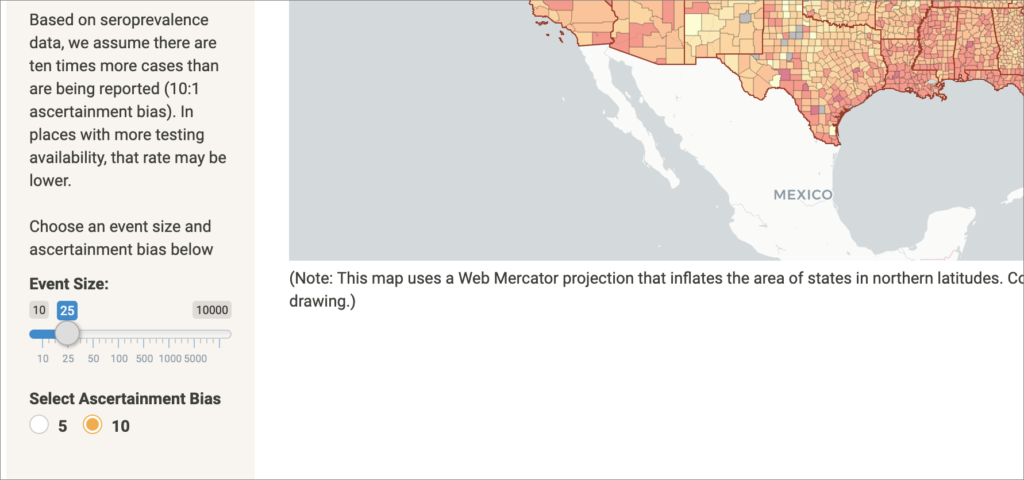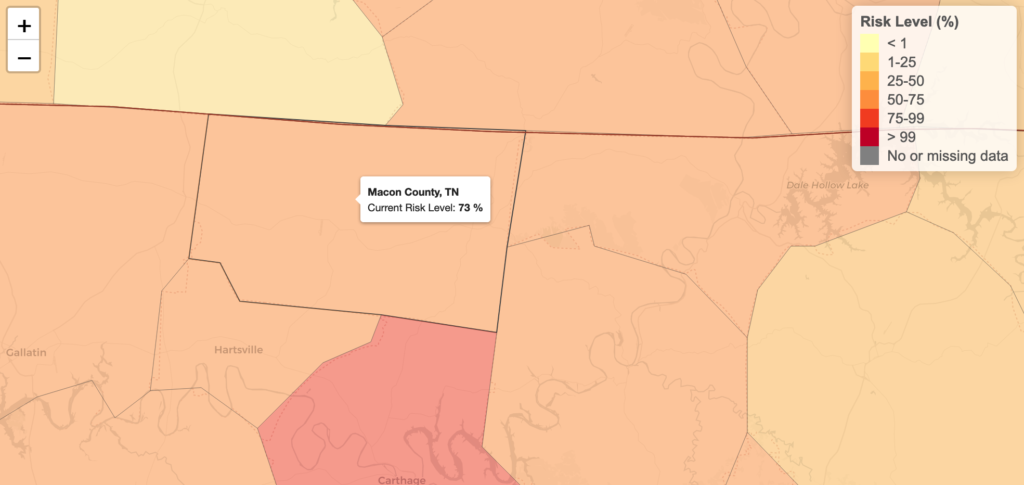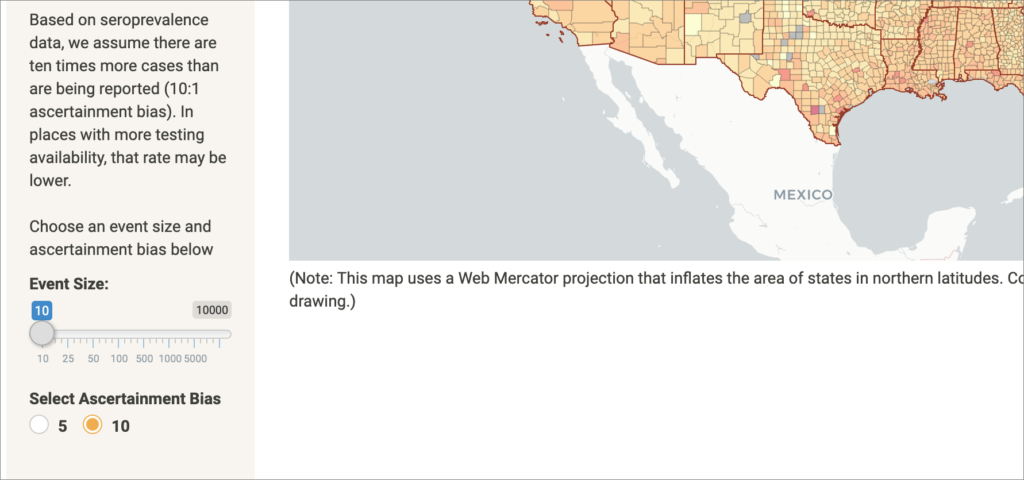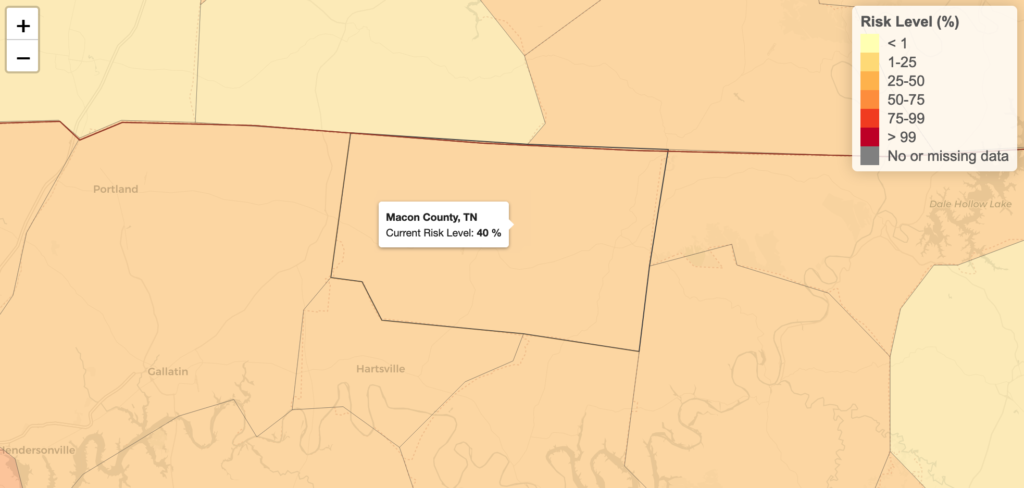Wondering when it’ll be safe to plan or attend a gathering again? Georgia Tech and Applied Bioinformatics Laboratory have created a map that lets you calculate the odds of coming in contact with someone who has COVID-19.
How to use the map
The site offers several different risk-estimation tools, but we’ll focus on the map because it’s the easiest to use and interpret.
First, let’s be clear about what the map projects: the risk level, in percentage, of there being at least one person with COVID-19 present at an event, given the county and the size of the gathering. The developers note that they assume that there are ten times more cases than are being reported (ascertainment of 10%), though you can reduce that estimate of ascertainment bias down to 5-fold (20% ascertainment) using the radio boxes at the bottom. Right now the 20% number is probably closer to correct in much of the USA, but 10% may be closer to right in low-ascertainment areas.
Second, let’s be clear about how the map works. It makes an assumption of uniformity and independence: that every person who comes to the event is exactly as likely to be infected as anyone else in the county (uniformity) and that their chances of being infected are independent from each other (independence). Under this assumption, the odds are easy to calculate with a simple binomial expression. However, these assumptions are not strictly accurate, and the results of a calculation like this can be regarded as approximate at best.
To start your calculation, choose the size of the event you might attend. The map includes a sliding scale from 10 people to 10,000 people.
Once you’ve selected an event size, hover your mouse pointer (the map works best on desktop) over the individual counties on the map. As you hover over a county, a tooltip appears with the percentage chance of a COVID-19 positive person being at the event, given the size. Each county is color-coded by risk level: the more risk, the redder and darker the color.
The key adjustment you can make with the map is to adjust the event size slider. You want to adjust this before zooming in on the map because it redraws the entire map whenever you adjust the slider. As you might expect, the map grows redder and darker as the event size increases.
A real-life example
To make it clearer how to use this when considering an event, let’s take a real-life example. My son’s birthday is coming up, and we always throw him a big party. However, we also have a major COVID-19 outbreak in our county. What risks would we be taking by throwing caution to the wind and having the party anyway?
We usually have a lot of kids at these parties, so we’ll assume an event size of 25 people.
Once that’s set, I zoom in on our county and hover the mouse pointer over it on the map. There is a whopping 73% chance that someone will be bringing a little something extra to the party. Sorry, kid.
But what if we dropped the event size to only ten people?
Zooming in, we see that the odds of having a COVID-infected guest have dropped to 40%.
The odds are a lot better but still high. Just as we figured, having a birthday party is out of the question this year, but at least now we have the data to back up our decision.
Use your best judgment
This map is a great tool, but it can’t tell you for sure if the specific gathering you want to attend is safe or not. All it can offer is the estimated odds that someone at the gathering will be positive for COVID-19. Whether you’re comfortable with a 50% chance or a 0% chance is up to you.
